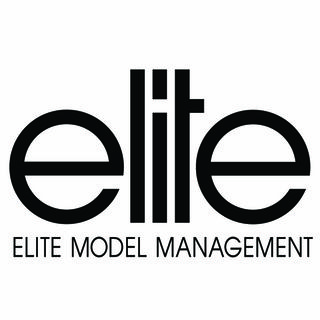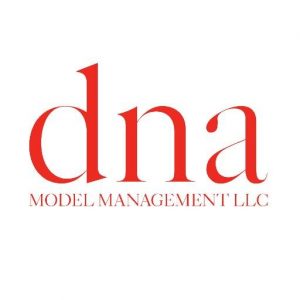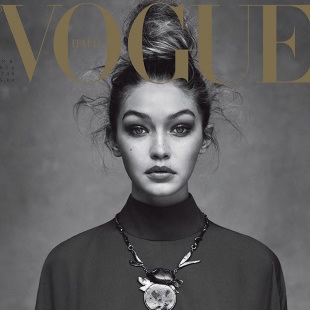Types of Agencies
In a market as large and diverse as New York or Los Angeles agencies tend to specialize. Either they service niche markets or
they have divisions that specialize in markets segments. Most “commercial print agencies” for instance, do not do much fashion work, don’t staff music videos or national TV ads, at least to any large degree. Other agencies or divisions do that – and the model (or model/performer) may need to be represented by more than one agency for different market segments.
Editorial Fashion Agencies
For this discussion we will use the term “fashion agency” to mean “editorial fashion agency”. More “commercial” fashion
agencies are closer to a “hybrid” agency (see below). Fashion agencies specialize in runway modeling, fashion magazine editorials and fashion (including high-end beauty product) advertising. Despite the name “editorial” agency, no agency survives on editorial work, since it pays very little. The money is in the advertising “campaigns” mounted by designers and cosmetic companies.
Kinds and Numbers of Models
Give or take ethnic diversity, editorial fashion models are all of a particular type. Men are tall (6’ or so), attractive, slim, with
long legs. Women are tall (5’10” or so), very slim, with long legs and beautiful faces. There are very few exceptions. A fashion
agency may represent from a couple of dozen to a hundred or so models.
Kind of Contract
Virtually all fashion agencies use exclusive contracts with their models. They may allow a model to freelance for a little
while, as they assess her potential and market appeal. But for anyone they are serious about, they will insist on the contract.
Model Services
A major part of the job of a fashion agency is model development. They are accustomed to recruiting models with no
suitable pictures, no experience, and no modeling skills. The agency will guide the model through all he needs to learn and
acquire, and sometimes will advance the money to get those things. Models may spend weeks or months under the tutelage of their agency before they graduate to the “main board”. In addition to training, experience, grooming and pictures, the agency may also have to assist models with housing (in their own models’ apartments) and with the logistics of getting around in their city.
Model Marketing
A vital part of marketing an editorial model is development to establish her as a recognizable face. The agency will send
models on “rounds” where they meet people who hire models. These aren’t casting call go-sees for specific jobs; they are simply an opportunity to meet and become known to clients. Then when a job comes up, the client knows who they are and is more likely to hire them.
Volume of Work
In a fashion agency clients are looking for (very roughly) the same kinds of people for every job. The only distinction is “look” within the broad category of “fashion model”. Every model on an agency’s books (within the special criteria of race and sex) is at least nominally qualified for every job. Given the small number of models (comparatively) in their agency, and the high probability that they will be qualified for consideration for any job, they can expect to have a reasonably large number of castings to go to, and book work relatively frequently.
Where They Get Their Models
Fashion agencies are looking for great rarities, especially among female models. No more than one in ten thousand girls
qualify, and the number is probably much lower. Even in a city like New York there aren’t nearly enough highly qualified girls to meet demand. Naturally recruiting is a major part of their function. Fashion agencies recruit worldwide. They have networking agreements with mother agencies. They attend model searches and conventions, and in some cases even hold their own highprofile model searches. They send scouts to South America, Europe and wherever they think they may find more models. When they find them, they sponsor work visas for the models so they can work in the United States.
They also hold open calls (although very few fashion models are found through open calls), and the largest of these agencies receive hundreds of mail and email submissions from aspiring models each day. Even with all that, the continuing demand for new faces in the fashion business, and the rapid turnover of models, keeps the agencies looking hard for new faces.
Commercial Print Agencies
Kinds and Numbers of Models
Take a look at the kinds of people portrayed in commercial advertising. It’s a very wide variety. Pharmaceutical companies
may want primarily people in their 40s, 50s and older. Soft drink companies may want early 20s. An upscale car company might want to portray upscale drivers in their late 30s, or young couples just starting out, depending on the car they are advertising. They may target any ethnic group, and so need models from that group. Ads tell a story in pictures, and the story may involve business people, Harley Davidson bikers, soccer moms or debutantes from any major ethnic group.
Commercial print agencies need models who look like all of those. It’s worse: they can’t have just one of each type; they have to have a selection for the client to choose from. To the degree possible they do just that. They may have several hundred (or more) models on their books. That leads to all the other kinds of behavior you see discussed below.
Kind of Contract
In New York City commercial print agencies do not sign their models to “exclusive” contracts. Print work is much less intensive than editorial fashion work: they know they cannot keep you busy. They also know that commercial clients tend to call more than one agency; that they get some calls but not all of them, and that it is usually in the best interests of the model to “freelance” – to work with more than one commercial print agency if they can. This can lead to some potential conflicts, so procedures (discussed in “How Modeling Jobs Work”) have been agreed on to deal with this. Generally the agency would prefer that you not be listed with several others, but they also understand that it is a reasonable thing for you to do.
Model Development
Because a commercial print agency has non-exclusive contracts with its models it tends not to invest in model development. They prefer models who are experienced, ready to work, and have the marketing materials they need before they are represented by the agency. In that way they are different from fashion agencies. The commercial print agency will rarely front expenses for a model. If the model needs pictures, he pays for them himself. A portfolio? Same. A place to live? The agency doesn’t have a model’s apartment, so he will have to find an apartment or hotel.
Model Marketing
The process of presenting models to clients is very different from fashion also. Where a fashion agency may send models
around to their clients just to get them known, that is rarely-tonever done by a commercial print agency. Models are not
individually recognized; they are commodities: “types”. Commercial clients use a very wide variety of models, and they
focus on the next task at hand. They have no interest in seeing models except for the job they are currently working on. As a
result, the commercial print agency becomes a warehouse which stocks models of various types and dispatches them to clients only as the need arises. There is little “pushing” of a model. If there is preferential treatment by commercial print agencies it is based on the relationship the agent has with the model. If they like him, he comes to mind first when a job opens up. If they don’t, he may be sent on jobs only when there aren’t a lot of better choices. Models who are used to the way fashion agencies operate find this disappointing. They expect the kind of individual marketing and presentation to clients that they have received (or heard about) at other kinds of agencies. It takes a period of adjustment to become comfortable with the role of their new agency.
Volume of Work
Even if a commercial print agency gets double or triple the number of jobs per day as a major fashion agency, any given
model is very unlikely to be sent out on jobs as often as a fashion model might. “Construction worker” types aren’t what gets sent on “Wall Street Businessman” jobs; 40s Business Women types don’t get sent on beer ads looking for glamorous models. No model is qualified for more than about 5% of the work the commercial agency casts for. As a result, commercial print models usually treat modeling as an avocation or second job while doing something else to pay the rent. A small percentage in the heart of the market can make a full-time living at it.
Where They Get Their Models
The combination of non-exclusive contracts and intermittent nature of the work make it very inadvisable for anyone to relocate just to be a model with one commercial print agency. The agencies know it, and commercial print agencies recruit their models almost exclusively from their own city (or within an hour or so drive of it), hence the reason why they do not have models’ apartments. Most do not hold open calls, and rely on mail-in submissions from applicants. When commercial print agencies go to model searches or conventions they are looking for a model who is already living in their city, or planning to move there for other reasons.
Hybrid Agencies
Editorial Fashion and Commercial Print agencies represent polar extremes of their type. Most agencies are a blend of the two types, and even within large markets the specialization isn’t as rigid as has been presented. In the smaller markets most real model agencies service the entire range of modeling. The market doesn’t allow as much specialization; the overhead of an agency means they have to try to book every kind of modeling job they can. Even so, the heavy focus by most regional and local advertisers on clothing ads (or ads where people “look like models”) means that the local agencies will likely focus more on “fashion model” types, albeit a more “mainstream” look than you might see in the New York fashion market.
Hybrid agencies may adopt some of the business practices of both editorial fashion and commercial print agencies, depending on their focus, the amount of work they have available, and how much competition they face in the area. In smaller cities most hybrid agencies also have ties to fashion agencies in larger markets or overseas, and act as mother agencies for their fashionqualified models.
Promotional Agencies
Promotional agencies operate very differently. In other modeling the client hires and pays the model; the agency just
serves an accounting and administrative function in passing on the money. Promotional agencies may be the employer of the models, and provide temporary staffing to events as needed from their group of models. Their relationship to the models tends to be more perfunctory than other model agencies, more like the way any other temporary employment service operates. For such agencies models may not be on a commission basis. The hourly or daily rate the agency quotes the model is what he gets. The agency makes its money by contracting for a services at whatever rate they can negotiate for, and then sending the model on the job at whatever rate they can get her to take. It’s not at all uncommon for a job to be quoted to the model at half of the hourly rate the client is charged. Also because they are the employer, they may not be subject to regulation by state and local authorities as an “employment agency”.
In-House Talent Agencies
In places like New York City, where “model agencies” aren’t really agencies (they are management companies), there are some jobs that must be booked through a licensed and/or union franchised agency. Smaller booking management companies may “fee split” with a franchised talent agency, which actually books the work for the model. Some of the larger model management companies have their own “in house” agency. Formally it is separate, but it exists to service the booking needs of their host model management company. This practice is much less common in recent years, ever since the agent’s associations broke the union contract requirements. Now non-franchised agencies in many areas can book talent into union jobs.
Almost-Agencies
A small agency needs to book tens of thousands of dollars in modeling work every month just to pay the rent and employees. In lots of cities that level of work simply doesn’t exist. Remember Acme and Wong’s, above? Those fictional model agencies were in small market cities where there isn’t enough modeling work for a company to survive on commissions alone.
So what to do?
A very common choice is to get income from some other source. Unlike Acme and Wong’s, who chose side businesses
unrelated to modeling, many agencies provide model-related services for a fee. They may offer classes, photo shoots, comp
card printing, attendance at model conventions (they get a hefty commission on your attendance fee) or any of a wide variety of ways that entrepreneurs around the world have found to separate models from their money. The very best of these will offer good quality services that actually benefit the models. Others will simply go through the motions and provide poor services at inflated prices. They are hoping the models (and their parents) can’t tell the difference. Most of the time they are right. In situations like that it’s very unlikely that you will ever make enough money modeling to pay for all the services such an agency sells. The choices usually come down to: this is the only game in town (or all the other games are the same). If you want to be a model that badly, it’s the game you play. But your chances of making money from it are remote. There are hundreds of such “almost agencies” around the country. If you find one, go into it with your eyes open; recognize that you are being asked to pay for the privilege of being a model.







Comments 0